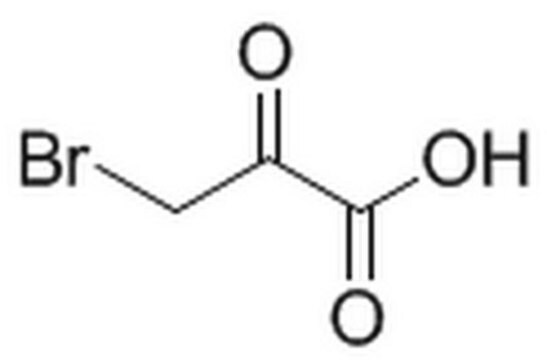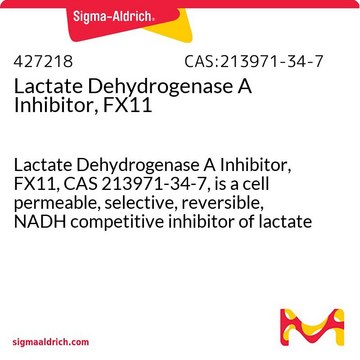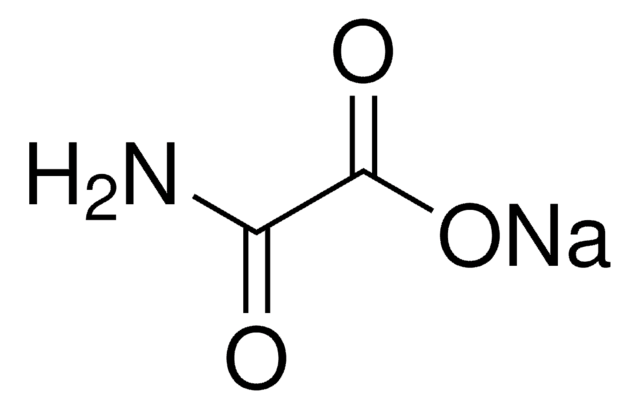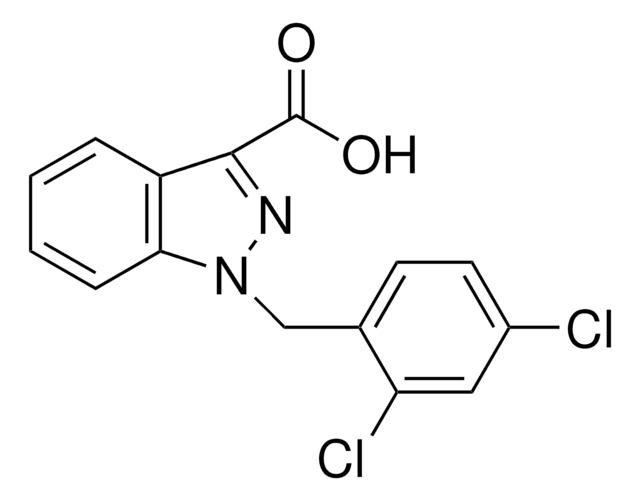推荐产品
化驗
≥98% (HPLC)
形狀
powder
顏色
white to beige
溶解度
DMSO: 2 mg/mL, clear
儲存溫度
−20°C
生化/生理作用
Active site-targeting, potent and selective lactate dehydrogenase (LDH) inhibitor that affects glycolysis-dependent cancer proliferation & survival.
GNE-140 is an active site-targeting, potent and selective lactate dehydrogenase (LDH) inhibitor (LDH-A/B/C IC50 = 3/5/5 nM; LDH-A IC50 = 22 nM with mixed GNE-140 diastereomers; malate dehydrogenases MDH1/2 IC50 >10 μM; 301 kinases IC50 >1 μM) that reduces cellular lactate (IC50 = 670 nM; MIA PaCa-2) and upregulates pyruvate levels. GNE-140 affects glycolysis-dependent cancer proliferation (IC50 = 430 nM; MIA PaCa-2 & KP-2) & survival, but not oxidative phosphorylation (OXPHOS)-dependent growth. Due to rapid clearance, GNE-140 is ineffective against MIA PaCa-2 tumor growth with only transient lactate-reducing efficacy in tumor tissue in mice in vivo (100-400 mg/kg b.i.d. p.o.).
儲存類別代碼
13 - Non Combustible Solids
水污染物質分類(WGK)
WGK 3
閃點(°F)
Not applicable
閃點(°C)
Not applicable
Aaron Boudreau et al.
Nature chemical biology, 12(10), 779-786 (2016-08-02)
Metabolic reprogramming in tumors represents a potential therapeutic target. Herein we used shRNA depletion and a novel lactate dehydrogenase (LDHA) inhibitor, GNE-140, to probe the role of LDHA in tumor growth in vitro and in vivo. In MIA PaCa-2 human
mTORC1-Dependent Metabolic Reprogramming Underlies Escape from Glycolysis Addiction in Cancer Cells.
Raju V Pusapati et al.
Cancer cell, 29(4), 548-562 (2016-04-08)
Although glycolysis is substantially elevated in many tumors, therapeutic targeting of glycolysis in cancer patients has not yet been successful, potentially reflecting the metabolic plasticity of tumor cells. In various cancer cells exposed to a continuous glycolytic block, we identified
Anneleen Daemen et al.
Proceedings of the National Academy of Sciences of the United States of America, 112(32), E4410-E4417 (2015-07-29)
Although targeting cancer metabolism is a promising therapeutic strategy, clinical success will depend on an accurate diagnostic identification of tumor subtypes with specific metabolic requirements. Through broad metabolite profiling, we successfully identified three highly distinct metabolic subtypes in pancreatic ductal
John Smestad et al.
Oncotarget, 9(5), 6109-6127 (2018-02-22)
Succinate dehydrogenase (SDH)-loss pheochromocytoma and paraganglioma (PPGL) are tumors driven by metabolic derangement. SDH loss leads to accumulation of intracellular succinate, which competitively inhibits dioxygenase enzymes, causing activation of pseudohypoxic signaling and hypermethylation of histones and DNA. The mechanisms by
我们的科学家团队拥有各种研究领域经验,包括生命科学、材料科学、化学合成、色谱、分析及许多其他领域.
联系技术服务部门







